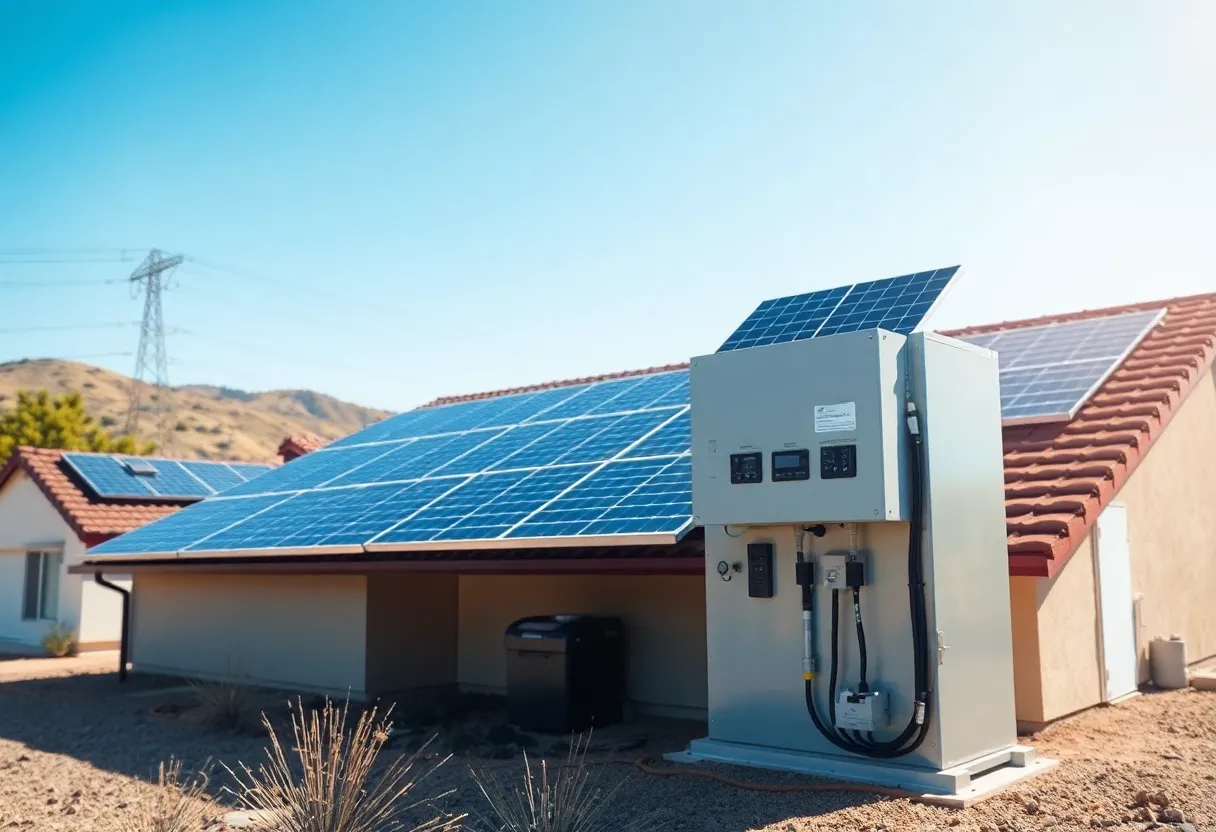California, August 21, 2025
News Summary
California’s Demand Side Grid Support (DSGS) program, crucial for energy cost reduction and grid reliability, may face significant funding cuts amid a $100 million budget shortfall. Initiated in 2022, the DSGS allows residential battery owners to sell energy back to the grid, proving effective during peak demand. Advocates warn that funding reductions could undermine the program’s potential savings and reliability. As demand rises, the future of the DSGS hangs in the balance, highlighting the critical need for sustainable energy solutions.
California is facing a potential setback in its Demand Side Grid Support (DSGS) program, which is vital for reducing energy costs and enhancing power grid reliability. California lawmakers have proposed significant budget cuts, including $100 million in funding reductions, to address a budget shortfall. This leaves the future of the DSGS program uncertain, despite its critical role in managing the state’s energy demands.
The DSGS program, which began in 2022, has made remarkable progress in a short period. It allows residential battery owners to sell energy back to the grid during peak demand times, thus acting as a support system during critical supply periods. Notably, a virtual power plant test conducted on July 29, 2023, saw over 100,000 residential batteries contributing an average output of 539 megawatts (MW) between 7 and 9 p.m., showcasing the program’s capabilities.
Advocates argue that cutting funding for the DSGS program would remove proven, cost-effective solutions amid rising energy costs and reliability challenges. The Brattle Group released a report indicating that the program could deliver net system cost savings ranging from $28 million to $206 million between 2023 and 2028. Furthermore, Brattle forecasts that DSGS battery capacity could double within the next three years, allowing for over 1 gigawatt (GW) of dependable performance for California’s grid.
Impacts of Funding Cuts
California utility Pacific Gas and Electric (PG&E) has been active in testing virtual power plant (VPP) programs, which are designed to address various grid needs and possibly defer costly infrastructure upgrades by aggregating decentralized energy resources. The July test demonstrated that the participating batteries operated similarly to traditional power plants, achieving a consistent output level during peak usage times. Over 88% of the megawatt output during this test was attributed to batteries enrolled in the DSGS program.
Key players in the energy sector, including Tesla and Sunrun, have significantly contributed to the operational capacity of the DSGS program. Colby Hastings, a senior director at Tesla Energy, emphasized the considerable untapped potential of California’s residential battery capacity, which stands at over 1.8 GW. Meanwhile, Sunrun’s CEO highlighted how aggregated home energy generation and storage can function effectively as multiple peak generation plants.
Challenges Ahead
Despite the DSGS program’s success in stabilizing the grid during high-demand periods, critics led by Advanced Energy United emphasize the necessity of restoring funding commitments. They argue that the proposed cuts would hinder California’s progress in establishing a reliable distributed energy resource network. The DSGS program requires at least $75 million in funding by 2026, alongside ongoing multi-year financial support to build investor confidence.
The challenge persists as California’s energy demands continue to swell, exacerbated by issues like wildfires and heatwaves. The DSGS was initiated in response to these reliability concerns. However, uncertainty surrounding funding poses significant hurdles in securing the long-term support and regulatory framework necessary for the program to thrive.
As California seeks sustainable solutions to its energy challenges, the fate of the Demand Side Grid Support program will play a crucial role in determining the effectiveness of the state’s transition towards a greener energy future.
FAQ
What is the Demand Side Grid Support (DSGS) program?
The DSGS program allows residential battery owners to provide energy back to the grid during high demand periods, helping to stabilize the power supply.
Why is the DSGS program facing funding cuts?
California lawmakers proposed budget cuts to address a $100 million shortfall, which includes reductions in funding for the DSGS program.
What impact could funding cuts have on the DSGS program?
Funding cuts could undermine the program’s success and its ability to provide reliable energy solutions, affecting the state’s energy grid stability and cost-saving potential.
How much capacity do residential batteries in California have?
California’s residential battery capacity totals over 1.8 GW, with significant potential for increased utilization under the DSGS program.
What are the expected benefits of the DSGS program?
The program is projected to generate net system cost savings between $28 million and $206 million from 2023 to 2028, while also providing vital support for grid reliability.
Deeper Dive: News & Info About This Topic
- Canary Media: California Demand Side Grid Support Benefits
- Utility Dive: California’s Virtual Power Plant Could Save $206M by 2028
- RTO Insider: Budget Cuts Threaten California VPP Program
- Canary Media: California Budget Demand Side Grid Support
- Wikipedia: Virtual Power Plant
- Google Search: California Demand Side Grid Support

Author: STAFF HERE HOLLYWOOD
The Hollywood Staff Writer represents the experienced team at HEREHollywood.com, your go-to source for actionable local news and information in Hollywood, Los Angeles County, and beyond. Specializing in "news you can use," we cover essential topics like product reviews for personal and business needs, local business directories, politics, real estate trends, neighborhood insights, and state news affecting the area—with deep expertise drawn from years of dedicated reporting and strong community input, including local press releases and business updates. We deliver top reporting on high-value events such as the Hollywood Bowl summer concerts, the Hollywood Christmas Parade, film premieres at TCL Chinese Theatre, and festivals at the Magic Castle. Our coverage extends to key organizations like the Hollywood Chamber of Commerce and Visit Hollywood, plus leading businesses in entertainment, dining, and tourism that define the local economy. As part of the broader HERE network, including HERELosAngeles.com, HEREBeverlyHills.com, HEREAnaheim.com, and HEREHuntingtonBeach.com, we provide comprehensive, credible insights into Southern California's dynamic landscape.





